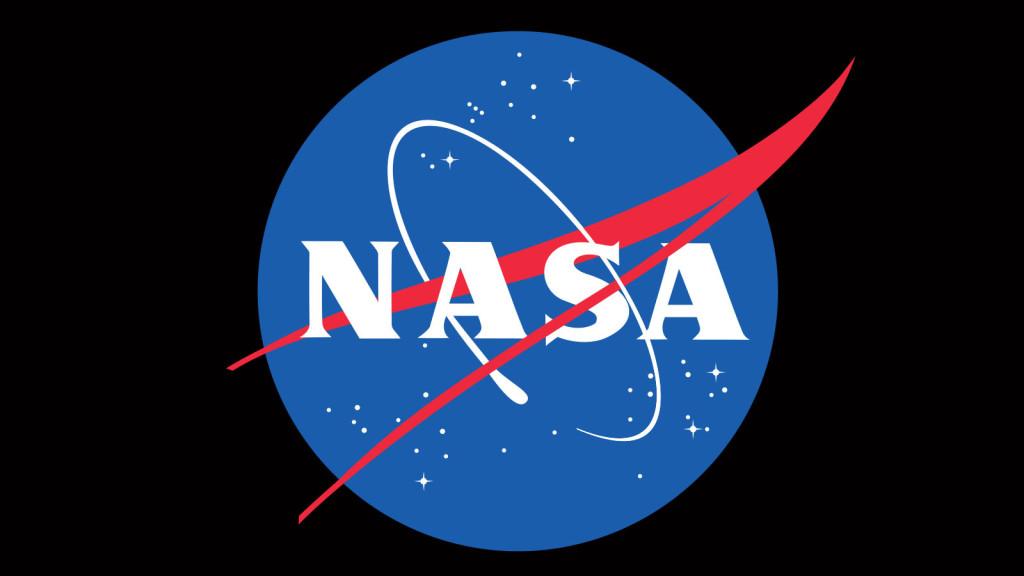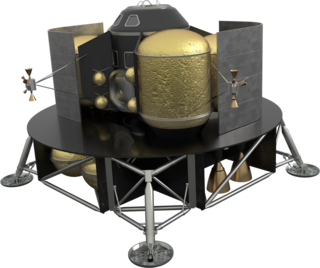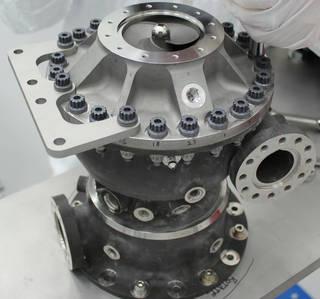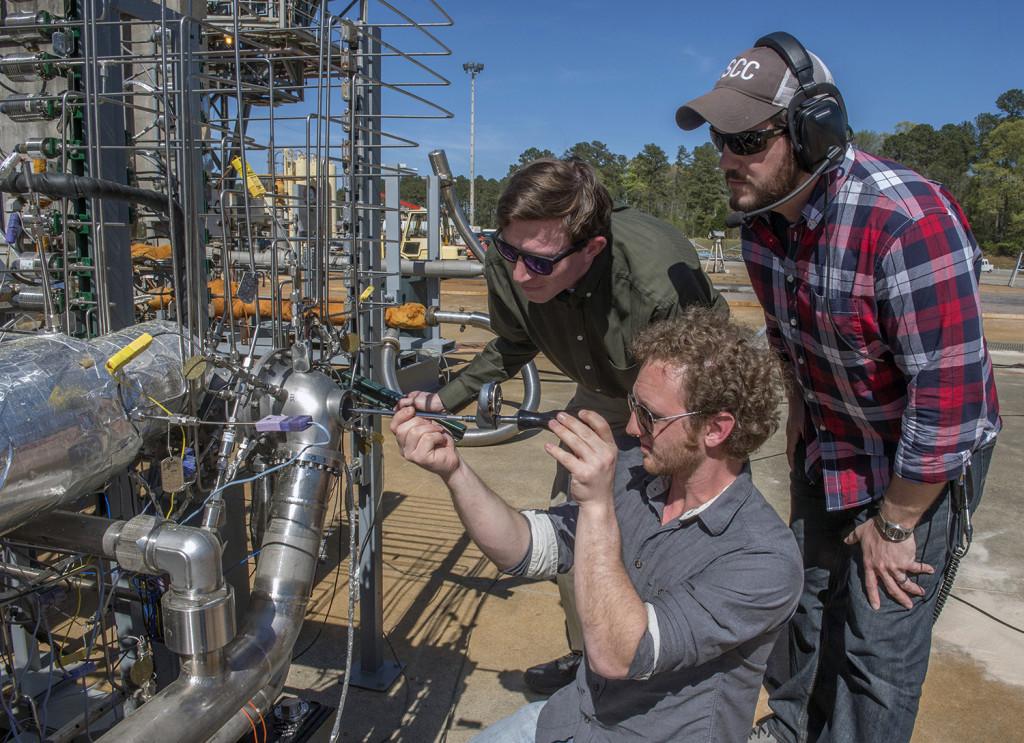 Space travel and new technology travel together, both conceptually and literally. And if you want to be continually fascinated and challenged, just keep an eye on NASA, where they are today using 3D printing for creating a multitude of components which may be responsible for getting us to places like Mars much faster, and perhaps allowing us to stay there longer too.
Space travel and new technology travel together, both conceptually and literally. And if you want to be continually fascinated and challenged, just keep an eye on NASA, where they are today using 3D printing for creating a multitude of components which may be responsible for getting us to places like Mars much faster, and perhaps allowing us to stay there longer too.
In considering all that we are able to do now, I often wonder if Chuck Hull, known as the creator of 3D printing and stereolithography, had any inkling at the beginning how far this 3D printing thing would go. Had he known, on the fateful night that he got his first ‘good part’ after months of experimenting with a vat of resin and ultraviolet light, that his work, his technology would be one day be the catalyst for a multi-billion dollar industry and causing what many refer to as a revolution—what would his reaction have been? While it’s fun to ponder different scenarios, I speculate that he would have smiled and kept on working steadily just as before; and he’s certainly been seeing it going forward since.
Indeed though, had a crystal ball been before Hull, he might have been privy to knowledge that he was not only going to be responsible for an enormous impact in the world of manufacturing, but also doing invaluable good in areas such as the medical field, where patients’ limbs would be saved due to innovations like 3D printed shoulders, children’s lives would be transformed thanks to 3D printed hands, and intricate surgeries previously not able to be performed would be navigated thanks to 3D printed medical models and devices.
And what about space? It may not be crucial to our health, but the dream of traveling further and further into space certainly does seem to be crucial to the human spirit—and new technology is what has always continued to propel us further into depths unknown. While NASA has indeed been using 3D printing to their benefit for years before most of us even knew what it was, do you think Hull could have ever imagined we would send a 3D printer to the International Space Station and astronauts would be there fabricating tools to maintain larger parts? Space suits for Mars have been made, ideas for colonizing explored, and 3D printed rocket engines will indeed fire far away from earth one day as we send astronauts to Mars.
It’s time to add one more thing to the list now too, as NASA has just performed testing on a 3D printed rocket engine turbopump with liquid methane, the propellant which they foresee getting spacecraft to Mars—and perhaps beyond. This pump is considered to be a very complicated component, made up of rapidly spinning turbines driving the pump and supplying the engine with the necessary fuel. In an incredible process overall, this requires generation of 600 horsepower from those turbines, and according to NASA, the fuel pump spins at a stunning 36,000 revolutions per minute as it works to deliver the methane at a rate of 600 gallons per minute.
“Methane propulsion and additive manufacturing are key technologies for the future of exploration including NASA’s journey to Mars,” said Graham Nelson, a Marshall propulsion engineer who helped with the testing. “We’re excited to complete testing that advances both these technologies at the same time and improves the capabilities of future missions.”
Because liquid methane remains at such a high temperature when submitted to freezing temperatures—in comparison to liquid hydrogen—according to NASA it boils off slowly enough to make it easier for storing for longer periods. along with easily being manufactured from carbon dioxide, in great supply on Mars. According to NASA, this will pave the way for being able to use methane-fueled space vehicles.
“By demonstrating the same turbopump can work with different fuels, we’ve shown that a common design would work for either engines fueled by methane or hydrogen,” said Marty Calvert, the Marshall engineer who designed the turbopump. “Because liquid methane is much more dense than hydrogen, it requires the turbopump to spin at a different speed to deliver the same amount of mass flow to the engine.”

From NASA: In this artist’s concept, fuel tanks are filled with liquid methane and liquid oxygen and engine nozzles.
Using 3D printing for the turbopump not only allows for greater customization options in design as well as easier prototyping in initial stages, but it also means a greater savings on the budget as well as often offering more lightweight parts and those that might also not have been possible to create otherwise. This is very common in other sectors who are enjoying both the innovation—and savings—allowed by the new technology.
“Additive manufacturing allowed us to build the turbopump with 45 percent fewer parts,” said Nick Case, the Marshall propulsion engineer who led the testing. “This made it affordable to build two turbopumps, get them on the test stand quickly, and get results. Our next step will be to test the liquid methane turbopump with other 3D printed engine components in a similar configuration to the liquid hydrogen tests completed last year.”
The parts are currently undergoing comprehensive testing to make sure they can endure the same conditions as landers, ascent vehicles, and other space vehicles, and according to NASA, test data is available so that companies in the US can work on building parts less expensively but with high quality that ensures meeting the requirements for aerospace standards. For approved users, NASA allows access to their Materials and Processes Technical Information System, MAPTIS, offering data on materials characterization and performance.
While the idea of putting astronauts on Mars may still seem impossible, NASA is certainly dedicated to the idea and forging ahead one solid step at a time. It’s very clear that 3D printing is playing a large role and has opened up countless avenues for NASA planners and engineers. And while many of the younger generations still dream of becoming astronauts one day, I think it’s safe to venture that many also hope to grow up and offer incredible new concepts and inventions to the world like that for which we can thank Chuck Hull. Discuss further in the NASA Tests 3D Printed Turbopump forum over at 3DPB.com.
[Source/Images: NASA]Subscribe to Our Email Newsletter
Stay up-to-date on all the latest news from the 3D printing industry and receive information and offers from third party vendors.
Print Services
Upload your 3D Models and get them printed quickly and efficiently.
You May Also Like
3D Printing News Briefs, July 2, 2025: Copper Alloys, Defense Manufacturing, & More
We’re starting off with metals in today’s 3D Printing News Briefs, as Farsoon has unveiled a large-scale AM solution for copper alloys, and Meltio used its wire-laser metal solution to...
Etsy Design Rule Change Reduces Selection of 3D Printed Goods
Online marketplace Etsy has implemented a rule change requiring all 3D printed goods on the site to be original designs. The update to the site’s Creativity Standards states, ¨Items produced using...
Siraya Tech Introduces New Elastomer 3D Printing Materials, Including Foaming TPU
California company Siraya Tech, founded in 2019 with a focus on material science, customer focus, and agility, develops high-quality 3D printing materials that meet the needs of creators, hobbyists, and...
3D Printing News Briefs, April 12, 2025: RAPID Roundup
The news from last week’s RAPID+TCT in Detroit just keeps on coming! That’s why today’s 3D Printing News Briefs is another RAPID Roundup of more exciting announcements from the trade...



































